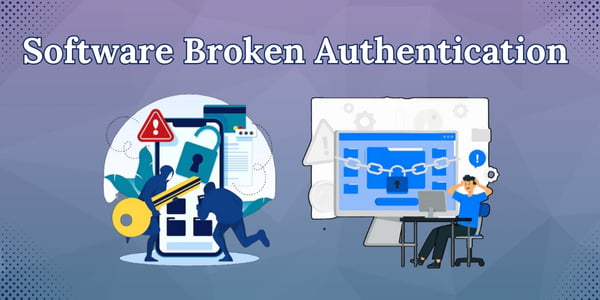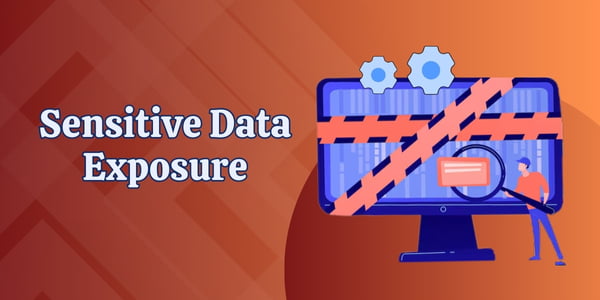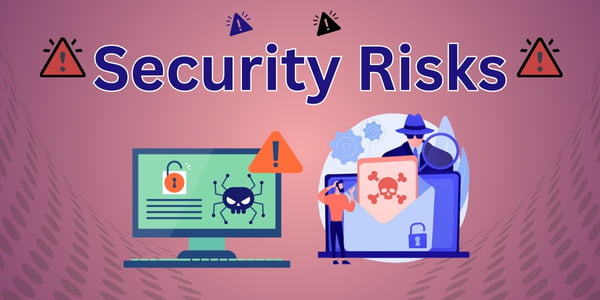Addressing Software Vulnerabilities: From Design To Deployment
Starting that business that you've wanted for a long time may be the win of the year (or even of your life). But that win could be short-lived if you fall short in the security department.
Now, it's almost unthinkable to run your business today without unique software. Customer Relationship Management (CRM) software? Enterprise Resource Planning (ERP) systems? Project management tools? That's just the tip of the iceberg.
However, these tools are, sometimes, the gateway through which threat actors access your business. That's why it's a great idea to be security-oriented from the design process down to the deployment phase.

Looking to get this right? You're in good hands.
In this article, we explore five critical software vulnerabilities and provide strategies to tackle them effectively during the design, development, and deployment phases.
5 Major Software Vulnerabilities
Guys, here is the list of all the five major software vulnerabilities: from design to deployment:
- Injection Flaws
- Broken Authentication
- Sensitive Data Exposure
- Broken Access Control
- Secuirty Misconfiguration
Let me guide you about each in great detail in the next sections.
Vulnerability 1: Injection Flaws
Injection flaws happen when a cyber intruder slips a malicious note—say, a sneaky SQL command—into your program. And what does it do in turn? It gives them access to your data world.
These flaws are among the most common and dangerous vulnerabilities, often leading to data breaches, system compromise, and unauthorized access.
How do you stop injection flaws in its tracks?
1. Design Phase
Think of this as setting up the ultimate bouncer at your digital door. You're teaching your software to be picky about who it lets in, rejecting any dodgy-looking data that tries to sneak past.
Steps:
- Implement input validation rules to define acceptable patterns and reject others.
- Use a whitelist approach instead of a blacklist to allow only specific, verified data.
- Segregate data handling logic from application logic to minimize direct exposure to malicious inputs.
2. Development Phase
Using parameterized queries and prepared statements, you can ensure that your software is not fooled by cleverly disguised intruders.
This phase is about building defense mechanisms into your application code. Think of it as ensuring every visitor to your "vault" undergoes rigorous checks, no matter how convincing they seem.
Steps:
- Use parameterized queries to prevent attackers from injecting harmful SQL commands.
- Sanitize user inputs across all fields, including headers and cookies.
- Employ ORM (Object-Relational Mapping) tools to reduce direct database access risks.
- Incorporate automated tools to test for potential injection vulnerabilities during development.
3. Deployment Phase
Regular updates and patches? They can ensure you're always ahead of the latest sneaky tricks. Don't know what to watch out for? You can start by checking out the current cyber security trends and stats or other guides you prefer.
Steps:
- Monitor logs to detect unusual patterns that may indicate injection attempts.
- Apply patches promptly for libraries, frameworks, and tools used in your application.
- Conduct regular penetration testing to simulate attacks and find vulnerabilities.
- Educate your team about evolving threats to ensure proactive mitigation.
Vulnerability 2: Broken Authentication
This tech hiccup happens when your software’s identity checks are more "hit or miss" than "spot on," allowing digital intruders right into your system.

Here's how to put a plug on this leak:
1. Design Phase
Consider setting up an ironclad identity verification. Unbreakable passwords? Layered security checks? Great idea right here.
Designing a robust authentication system involves thinking ahead about the possible loopholes intruders might exploit. A well-designed system deters attackers before they even attempt a breach.
Steps:
- Define strong password policies, requiring complexity and regular updates.
- Design a multi-factor authentication (MFA) system to add extra layers of security.
- Set up account lockout mechanisms after several failed login attempts.
- Plan session timeouts to prevent unauthorized access via stale sessions.
2. Development Phase
Now you're in the thick of it, ensuring your digital bouncer knows friends from foes. Tight session management and a keen eye for any out-of-place behavior? Great idea.
Here, you implement the nuts and bolts of the authentication system. You aim to ensure your application can accurately identify and validate users without fail.
Steps:
- Use secure hashing algorithms (e.g., bcrypt, Argon2) for password storage.
- Employ token-based authentication (e.g., OAuth, JWT) for secure session handling.
- Encrypt all communications during login and session exchanges with TLS/SSL.
- Validate the integrity of session tokens to prevent tampering.
3. Deployment Phase
Regular security health checks and updates can prevent any sneaky bugs or vulnerabilities from being exploited.
This stage involves maintaining the authentication system’s integrity over time. It’s like keeping your locks oiled and functional to ensure no one sneaks through.
Steps:
- Regularly review and update authentication mechanisms.
- Monitor login activity for signs of brute force or unauthorized attempts.
- Use tools to scan for session-related vulnerabilities.
- Train end-users on good password practices and encourage the use of password managers.
Vulnerability 3: Sensitive Data Exposure
Financial data? Personal info? Other types of data? If they're not well-guarded, they're up for grabs. So, how do you get this right?

1. Design Phase
Here's where you decide which data is the crown jewel and make sure it's locked in the vault, encrypted whether it's sitting tight or on the move.
Proper data protection starts with identifying what needs to be protected and implementing strong encryption protocols to safeguard it. Treat sensitive data like priceless jewels—always keep it secure.
Steps:
- Classify data based on sensitivity levels (public, internal, confidential).
- Plan for encryption using strong algorithms (AES-256, RSA) for data at rest and in transit.
- Incorporate secure data storage mechanisms, such as tokenization for payment data.
2. Development Phase
Not everyone needs access to the crown jewels. Establish strict data handling protocols and control who gets a peek.
During development, you need to ensure data is only accessible to those who absolutely need it. Implementing proper access controls and handling policies minimizes risk.
Steps:
- Use access control lists (ACLs) to restrict data access.
- Mask sensitive information in logs and error messages.
- Implement APIs to securely interact with sensitive data, reducing direct database exposure.
- Perform regular code reviews to detect accidental exposure points.
3. Deployment Phase
Test those encryption protocols and run breach simulations to ensure your treasures are always under lock and key.
Explanation:
During deployment, rigorous testing ensures that all implemented measures work as intended. Regular audits and proactive monitoring prevent potential breaches.
Steps:
- Conduct encryption audits to verify proper implementation.
- Simulate data breach scenarios to test system resilience.
- Monitor for unauthorized access attempts and respond swiftly.
- Apply timely updates to encryption libraries and protocols.
Vulnerability 4: Broken Access Control
Broken access control? That's like handing out all-access passes by mistake. Regular users could get access to admin-only areas and play around with things they shouldn't.
So, how do you go about this challenge?
1. Design Phase
Clearly define who gets the VIP treatment (admin) and who's in the regular zone (users).
The design phase ensures clear separation of roles and permissions. Avoid a "one size fits all" approach—every user should only have access to what they need.
Steps:
- Implement the principle of least privilege (PoLP) for user roles.
- Design workflows that differentiate between administrative and regular user functions.
- Incorporate centralized access management to ensure consistent rules.
2. Development Phase
Implement a bouncer at the door – that's role-based access controls for you. Keep an eye out and regularly review the code to ensure no one's sneaking past the velvet rope.
Role-based access controls (RBAC) enforce permissions systematically. Regularly testing access controls prevents unauthorized privilege escalations.
Steps:
- Develop access control mechanisms using established frameworks.
- Test access scenarios to ensure no excessive permissions are granted.
- Use audit logs to track and review access attempts.
- Perform automated scans to check for misconfigured permissions.
3. Deployment Phase
Before the big night (going live), do a dry run. Test every door, every pass, to make sure guests only roam where they're supposed to.
The deployment phase ensures real-world readiness. Rigorous testing and continuous monitoring prevent unauthorized access.
Steps:
- Conduct penetration tests focused on access control vulnerabilities.
- Monitor access logs for unusual patterns.
- Apply regular updates to access management software.
- Ensure quick response protocols for access-related security breaches.
Vulnerability 5: Security Misconfiguration

This broad vulnerability isn't choosy. Network services? Platforms? Web servers? Databases? It can come in anywhere. The culprits? Default settings, incomplete or ad hoc configurations, open cloud storage, misconfigured HTTP headers, you name it.
How do you make sure this doesn't happen to your business?
1. Design Phase
Draft your security blueprint with care. No generic locks or factory-default settings.
A well-thought-out design phase ensures your systems are built securely from the ground up, avoiding common pitfalls like leaving default credentials or configurations.
Steps:
- Define clear security standards for all components.
- Plan for secure default configurations across all software and hardware.
- Include compliance checks to ensure adherence to security policies.
2. Development Phase
Keep refining those security measures. Regularly update your plans and double-check your locks (configuration settings).
During development, regular reviews and updates of security configurations reduce risks of misconfigurations. Treat it as polishing your system to keep it robust.
Steps:
- Use configuration management tools (e.g., Ansible, Chef).
- Avoid hardcoding sensitive information like API keys.
- Regularly test configurations for weaknesses using automated tools.
3. Deployment Phase
Regularly patrol your digital estate (conduct security audits) to identify and correct misconfigurations and ensure all software components are up to date.
Continuous monitoring and auditing post-deployment ensure no gaps remain. Think of it as hiring a 24/7 security team for your digital assets.
Steps:
- Conduct regular security audits and vulnerability scans.
- Automate patch management to keep systems updated.
- Monitor cloud and network configurations for unauthorized changes.
- Implement incident response plans to address detected misconfigurations.
In Closing:
Awareness and preparedness? These are your best friends in the quest to find and weed out these vulnerabilities in your system. This article has given you some great tips on where to look.
So, go out there and get this right. Your business and its reputation may just depend on it. Feeling lost? No sweat. Reach out to the pros in the industry. Their wisdom can go a long way in helping you make the right moves.



Please Write Your Comments